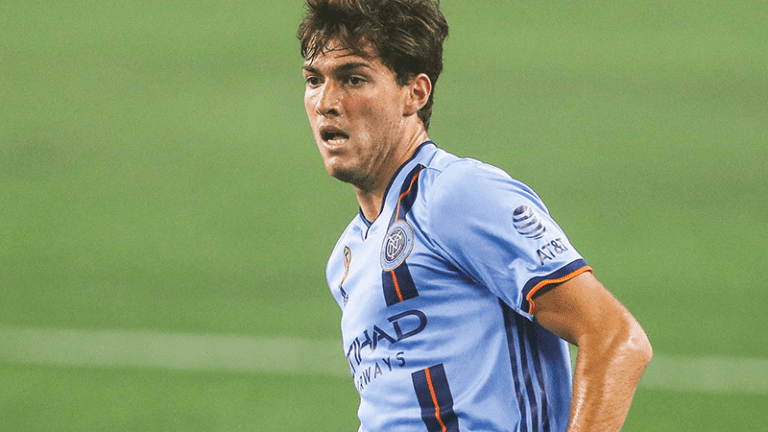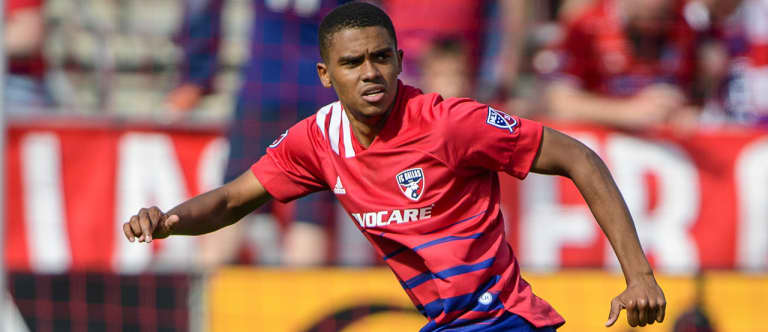With the latest news of Sergino Dest officially joining one of football’s true superpowers in FC Barcelona, it's beginning to feel like the U.S. men's national team now has the squad we’ve been hoping they’d have for years.
It's a squad full of young players with experience and exposure at the highest level, a squad that can dominate Concacaf for years to come, a squad with players that command respect from parts of the world that used to look down on American players. With the likes of Dest, Christian Pulisic, Zack Steffen, Tyler Adams, Weston McKennie and Giovanni Reyna — the last four coming through MLS academies — head coach Gregg Berhalter has the fortune and responsibility to guide this golden generation to heights the USMNT has never reached.
I grew up in England at a time when the only American players that seemed to excel were the goalkeepers: Kasey Keller, Brad Friedel and later on, Tim Howard. You’d get outfield players who did well, too — Brian McBride, Clint Dempsey, Claudio Reyna and Landon Donovan and others, but it happened in what felt like in short bursts. But it always seemed like there was only one player, at most two, doing really well in Europe at any given time.
Things are different now.
Not only do you have multiple players playing at a high level, but they are all very young and they will only get better. And most impressively, they are doing it at some of the biggest clubs in the world while playing in the strongest leagues and on the biggest stage of all — the UEFA Champions League.
Another plus is that McKennie, Adams, Dest, Reyna and Pulisic are all different players, and you can envision them playing together for many years. The star in the pack is obviously Christian Pulisic, who has the ability to become a Top 10 player in the world in a few years — we’ve never seen an American like him. It’s almost like he has the natural ability of Landon Donovan—dribbling, speed, and close control — combined with the mentality of Clint Dempsey: chip on his shoulder, wants the responsibility of being the man, scores in big games and uses adversity as a stepping stone to get to another level.
U.S. talent pipeline begins to flow

NYCFC right back Joe Scally is transferring to the German Bundesliga at age 17 | USA Today Sports Images
I think we all knew this day was possible and that it would come eventually, but why now? There are many contributing factors, but here are just a few:
American players are getting high level experience way earlier than ever before: I remember when Cesc Fabregas broke through at Arsenal in 2004 and by the time he was 20 he had played 150 games for Arsenal. By the time I was 20, I had just finished my college career at Akron. That’s where most players in the US system were at.
Now you have examples like Tyler Adams, who had over 100 games between the USL and MLS before his 20th birthday. The best teacher is experience and pressure to perform at the highest levels, and American players are getting that way earlier than ever before.
MLS, Euro clubs making the leap with young Americans: These teams are making it a point to identify potential stars very early and introduce them to a professional environment: training at a high intensity daily, eating correctly, watching film. So players are thrust into situations that demand growth like fighting for contracts, playing time and recognition, and clubs are trusting them with responsibility on the pitch as soon as they show they are ready. This is new for American players.
Perception is changing abroad: In preparation for this column, I spoke to a few friends in England and asked them to name the American players they’d heard of. Almost all of them had no problem listing off enough names to make up a gameday roster. This wasn’t always the case. In 2006, I could only name two MLS players: Donovan and Freddy Adu.
The days of Europeans looking down on American players are slowly disappearing because so many young Americans are going over there and proving they belong by playing key roles on big teams. This now forces European clubs to look over here much more than they used to because the players who are currently over there are shifting perceptions every day.
Soccer culture is growing in USA: What do I mean by that? As a kid, when I walked the streets of my London neighborhood I would see soccer games taking place in the park, in front of apartment buildings, and on the school playgrounds. Unorganized, unstructured soccer is where some of the best players learn their trade before getting into the organized games and tactics later.
I am now seeing young kids playing soccer in the park without any coaches present more than at any point since I moved here in 2007, and it’s happening nationwide. Slowly but surely.
Only scratching the surface

Reggie Cannon was the latest MLS academy talent to be transferred abroad to Boavista in Portugal | USA Today Sports Images
As excited as I am about the current crop of players, I feel we are only at the beginning of what is possible.
As more young American players do well overseas, the domestic clubs will be aware of their value in that market and will do all they can to identify and develop talent with an eye on transferring them as soon as they are ready. Therefore we will also see more and more young players playing and starting for MLS clubs. European clubs will also continue to look here for the next Reyna or Adams.
Most importantly, as the MLS academy system continues to improve in terms of the quality of coaching, training, placing players in situations that force growth (fighting for playing time and contracts), and the professional environment it provides, we will only continue to move forward with the quality of players in the generation after this one. The launch of MLS NEXT is designed to accelerate that development.
So what can the US hope to accomplish in the next 15 years? I believe the aim of any team should always be lofty and so they should be thinking about dominating the region and even have aspirations of one day winning the World Cup. Of course, that will be very difficult to pull off because other nations aren’t exactly standing still. But it should always be the aim.
When you factor in that level of ambition, the talent of the players, and the appetite of the fan base, it’s fair to say that U.S. national team manager Gregg Berhalter is under enormous pressure. Not just pressure to win, but the pressure that comes with not wanting to waste the best international years of Pulisic, Reyna, Adams, Dest, McKennie and those coming after them. We only have to look at a recent example to understand how easily this could all go wrong.
England had a golden generation featuring David Beckham, Steven Gerrard, Frank Lampard, Wayne Rooney, Rio Ferdinand, Ashley Cole, Paul Scholes and Michael Owen. All were Top 10 players in their position at some point in their careers and yet they failed to win any major honors at the international level.
The USMNT is still behind the very best teams, but the gap is closing and ultimately it will come down to one thing: How good is the pipeline after this current group? It cannot end with Pulisic, Reyna & Co. The next group has to be better, and the one after has to be better still.













